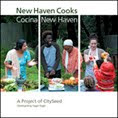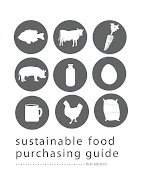I've been experimenting with milk lately. Cow, goat, rice, soy, and now almond. I love cream or milk in my coffee, but can't really sit down and drink a glass of cow's milk. It might have something to do with the stories my mother told me as a kid of her childhood in Holland and Israel where her mother would warm the fresh cow milk and serve it to her with the skin on the surface that forms with warmed milk. It nauseated my mother so much that she said one day she jumped out the window of her tiny house and ran towards school, only to be called back by her mother and made to drink her milk. Who knows if this really happened quite the way I remember her telling it, but none the less, I can't really stomach a glass of cow's milk. I do eat dairy, I can drink a glass of soy milk which is enriched with as much calcium as milk, and I eat lots of greens and nuts which are loaded with calcium as well. However, when my daughter was weaned at the age of two and started asking for milk from some where other than me, I started to re-examine the topic of milk.
I am not trying to bad mouth cow's milk, I think it is beautiful stuff, especially when I know it is coming from cows who are being treated well, allowed to graze on grass and not being over milked or given growth hormones to force increased milk production. I like to cook and bake with it, I love making ice cream, and whipped cream and yogurt, but, to be honest, the idea that humans are meant to be drinking the milk mother cows produce for their calfs has always struck me as bizarre. When you think about the fact that most people are freaked out by human breast milk, what makes the milk from a mother cow so great? I usually come around to the fact that the dairy industry did a great job convincing Americans that we need to drink milk every day, and lots of it. I mean seriously, why do you think dairy is it's own food group on the USDA food pyramid?! I look at dairy as a protein and a fat. I mean fish doesn't have it's own category because of omega 3 oils. The argument that milk is our best source of calcium doesn't fly when you can get calcium from greens, nuts, seaweed, ground sesame seeds, blackstrap molasses and many other foods. The power of this type of advertising was made obivious to me when I was in college and lived in Brazil. I spent some time in a favela (shanty town) in Fortaleza, and I remember visiting a small "house" built of cardboard and scraps of metal, and the image of a young and very poor mother who was standing near a shelf with a can of Nestle powdered baby formula on it. The idea that even in extreme poverty people can be convinced that they need to buy a manufactured milk product to feed their children, even though their own body produces milk that is far superior was just insane to me. That image is burned into my head for life.
So, back to the topic at hand, Almond milk. As I started examining what kind of milk to give my daughter, I found pluses and minuses to each kind of milk: soy milk which my husband and son like to drink, contains a lot of estrogen, so I didn't want to overload her (or them) with that, and it is a fairly processed milk with a lot of added ingredients, but it is higher in protein than it's similar counterpart, rice milk, making it more balanced for the body. Unsweetened rice milk is not too high in sugar, it is enriched with vitamins (not naturally occuring in rice or soy) which is sort of a plus and a minus. Goat milk is easier on the body than cow milk for people with lactose intolerance, and I looked at hemp milk, but it was expensive, and had a lot of ingredients in it, so i decided not to go that route. Then there was almond milk. The store bought version has about as many ingredients as rice and soy milk, but also has flavorings and a lot of sugars. I remembered my friend Shayla telling me when she weaned her son that she was making almond milk, at the time I thought, "almonds for a young toddler, should he have nuts?", but my daughter already ate nuts and was fine with them, so I googled it and found tons of great info on home made almond milk online. I had imagined that it would take a lot of almonds to make, so it would be expensive, but that wasn't the case. A half gallon of home made almond milk is made with about 1 to 1 1/2 cups of almonds and was about $1.75 to $2.50, depending on how rich you like it. It was easy to make, and my husband and I really liked it, the kids on the other hand, well, not so much. oh well.
My basic resolution at the end of this long brain splurge on milk was VARIETY. If we drink a variety of different milks we will get the nutrients and bonuses of each without over oading our bodies with any of the minuses. This is the answer I come up with for many questions about food. If we eat a variety of whole foods, different colors, textures, food groups etc, it will all balance out and our bodies will be happier for it. I know in some cultures people eat the same few foods every day and are very healhty and satisfied. I have experienced that living in other countries, but i do find while I am here in the USA surrounded by incredible marketing and huge grocery stores, markets and abundance, that I don't feel satisfied eating the same few things everyday.
Homemade Almond Milk
1 cup almonds
6 cups water (4-8 cups depending on your tastes)
Honey or other sweetener (optional)
Blender
Large bowl
Thin dish towel or 3 layers cheese cloth
Colander or mesh strainer
Additional water for soaking
Soak almonds in lots of water, overnight or for 24 hours. This brings the almonds back to life. If you think of them as a seed, which they are, the process of soaking them is actually getting them to start growing, so you are eating a food that is more alive than dead.
Soaked almonds in front, dry in back.
Set up your bowl with a colander or mesh strainer in it.
Cover the strainer with a thin dish towel or cheese cloth.
Place almonds in a blender with as much of the 6 cups of water as will fit. Reserve the rest.
Blend on high speed until the nuts are very fine.
Pour the milk into the strainer. You can scoop some of the nut solids out of the strainer and blend them with the remaining water. In my blender I fit 4 cups of water the first time and then added 2 cups more the second time. I have seen recipes with 4-8 cups of water, I felt like 6 was a good amount, but it is up to you.

Lift up the edges of the dish towel or cheese cloth and let the milk flow through the cloth.
 Twist the cloth until all of the milk is removed from the nut meal.
Twist the cloth until all of the milk is removed from the nut meal.The nut meal that remains can be eaten, or used in baking. It is great added to a cobbler topping, breads, muffins, yogurt or anything else you like. I tried to find info online about the nutritional content of the milk and the meal, but didn't come up with anything reliable. I do not doubt that it is good for you though, and it tasted good too, so why waste it?
In the end, I was left with a quart and a half (6 cups) of almond milk. I left the milk unsweetened in a jar in the fridge, but added a tiny bit of honey to my glass when I drank it. I kept it in the fridge and we drank it all within 3 days. It was an incredibly refreshing clean drink, great for a hot summer day.


































































